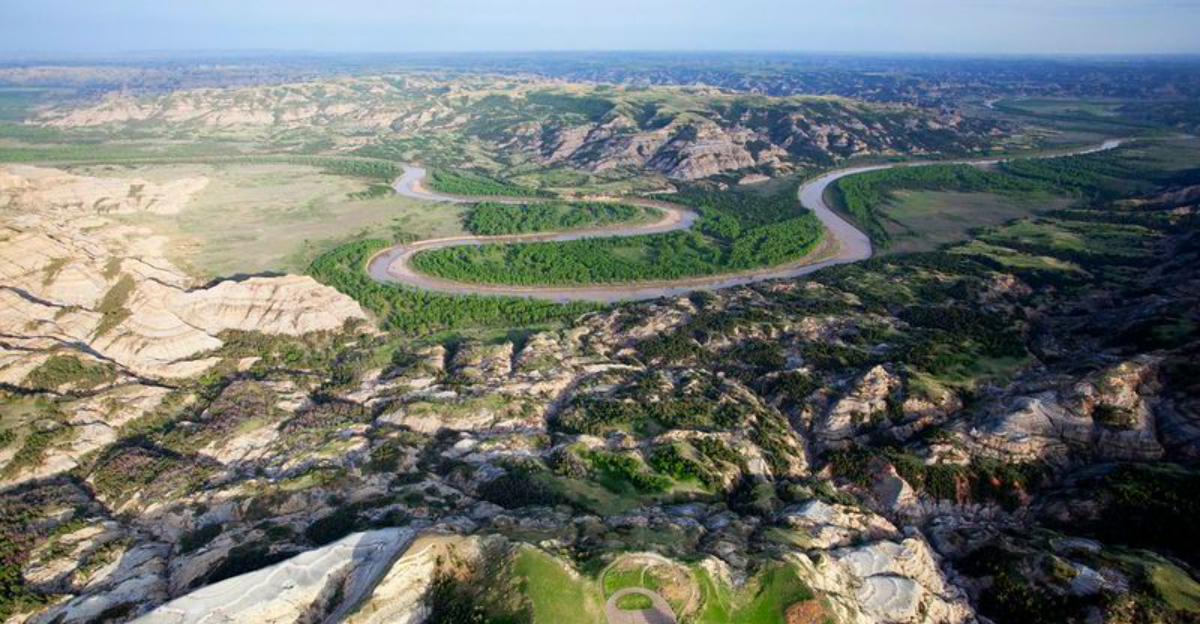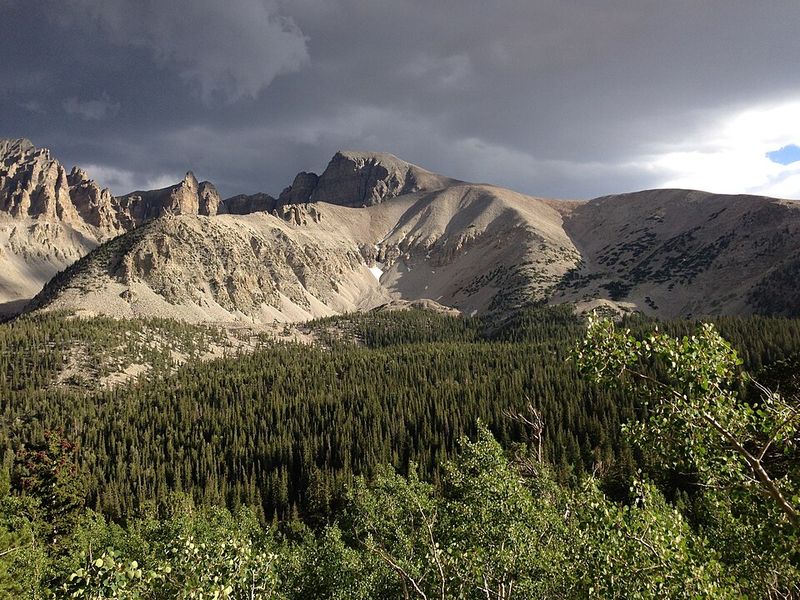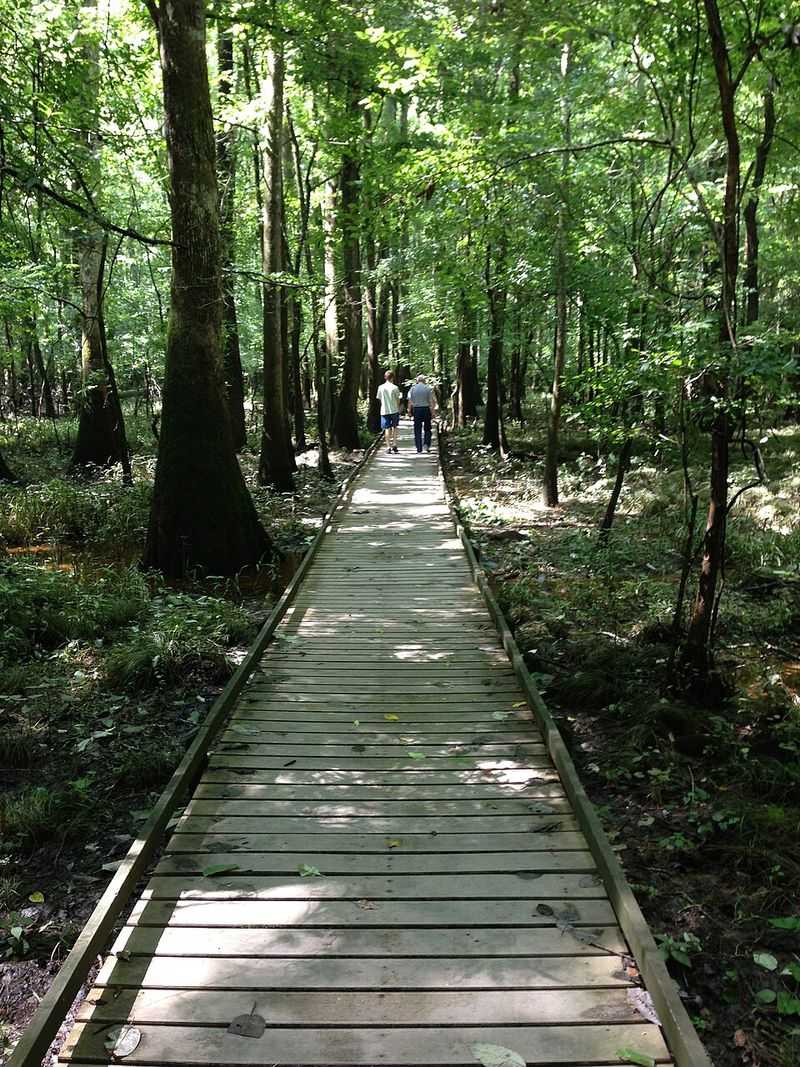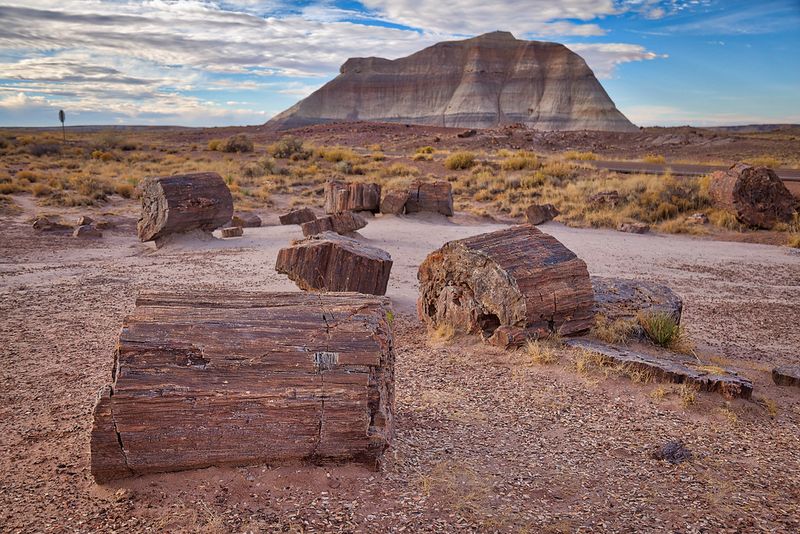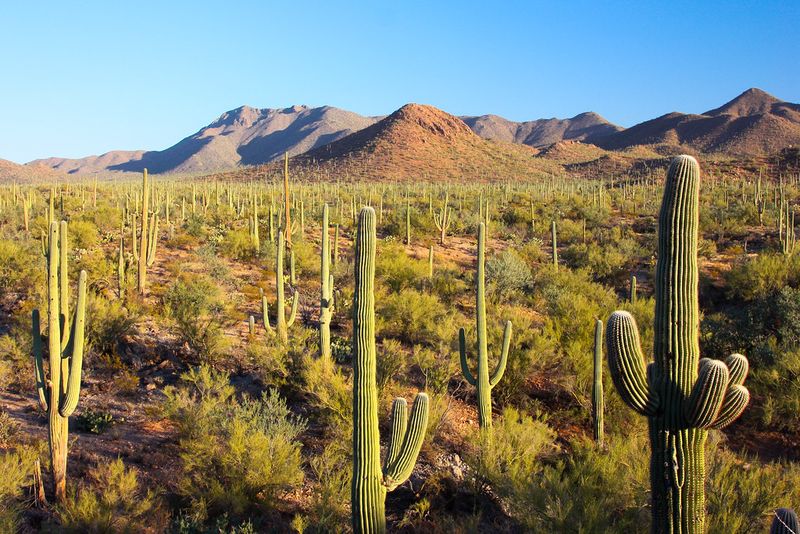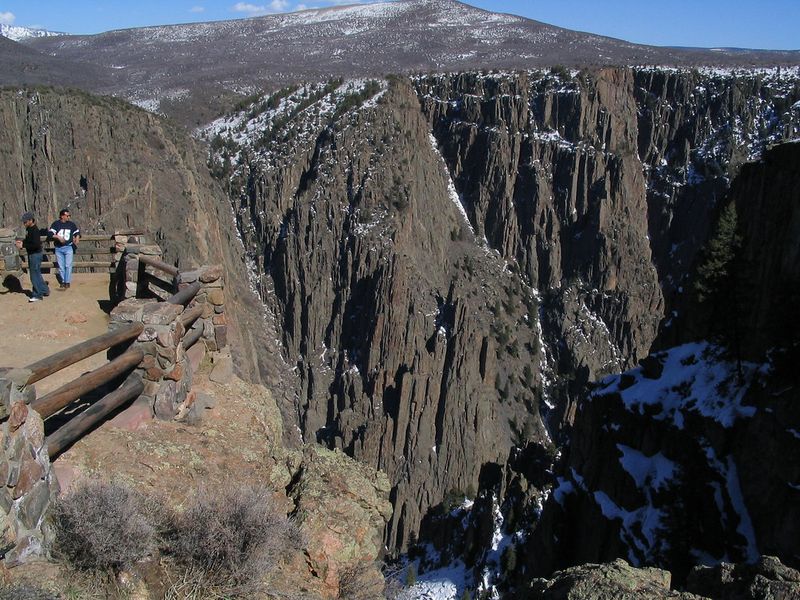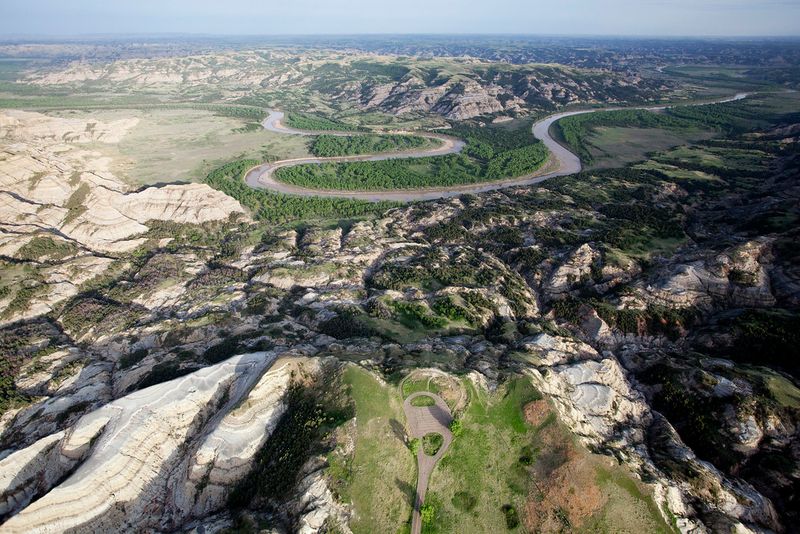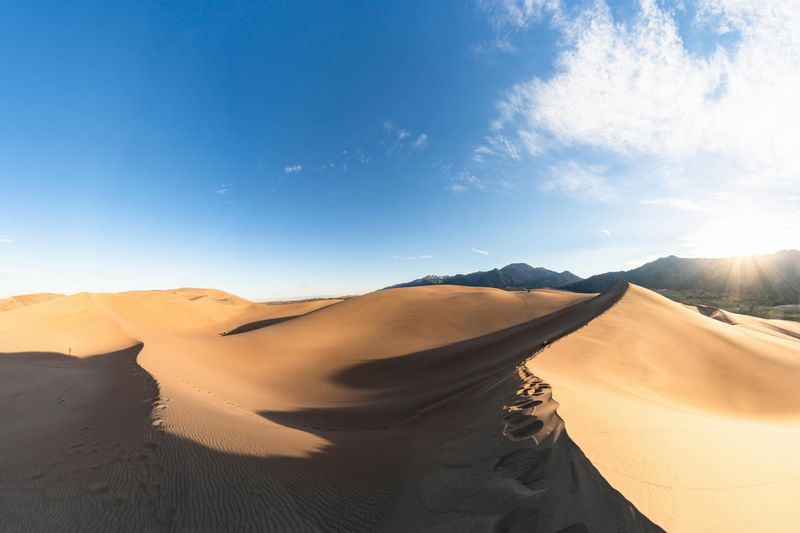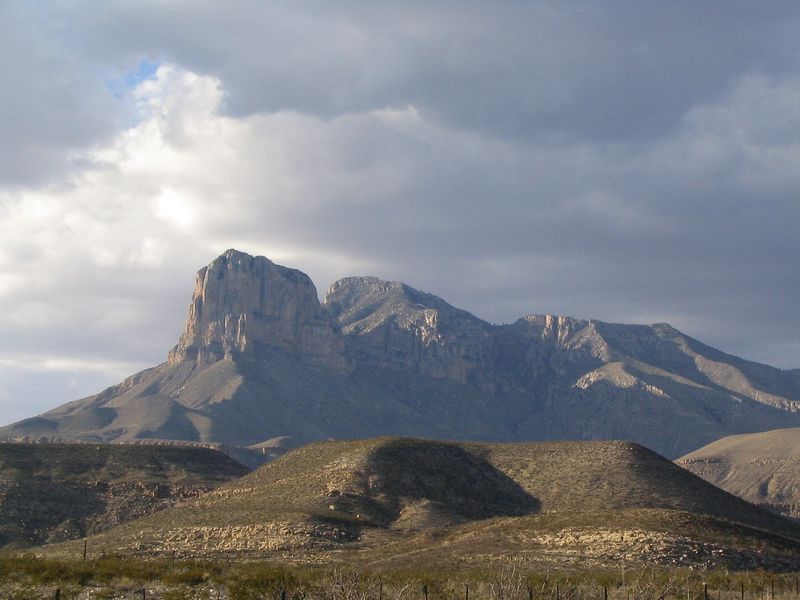America’s national parks are treasures, but some remain surprisingly unknown even to seasoned travelers. While millions flock to Yellowstone and the Grand Canyon each year, dozens of lesser-known parks offer equally stunning landscapes without the overwhelming crowds. These hidden gems provide the perfect escape for adventurers seeking solitude, unique natural wonders, and that rare feeling of discovering something truly special off the beaten path.
1. Great Basin National Park, Nevada
Stargazers consider this Nevada treasure one of the darkest places in America, where the Milky Way blazes across the sky like a cosmic river. Ancient bristlecone pines, some over 4,000 years old, twist and bend on the mountainsides, telling stories that span millennia. Below ground, Lehman Caves dazzle visitors with intricate formations of stalactites and rare shield formations.
With fewer than 150,000 annual visitors, you can hike Wheeler Peak without jostling for elbow room. The park’s remote location keeps it blissfully quiet, offering a genuine wilderness experience. Whether you’re exploring alpine lakes or simply sitting beneath those impossibly bright stars, Great Basin feels like your own private sanctuary.
2. Congaree National Park, South Carolina
Step onto the elevated boardwalks and enter a primeval world where champion trees tower overhead and Spanish moss drapes like nature’s curtains. This old-growth bottomland forest harbors some of the tallest trees in the eastern United States, creating a cathedral-like canopy above swampy waters. Barred owls hoot in the twilight while bobcats prowl the forest floor, rarely spotted but always present.
During certain seasons, bioluminescent fungi light up the forest floor like tiny green lanterns, creating an enchanting nighttime spectacle. The park’s flat terrain makes it accessible for most fitness levels. Paddle the Cedar Creek for an intimate view of this watery wilderness that time forgot.
3. Canyonlands National Park, Utah
Arches and Zion steal the spotlight, leaving Canyonlands to those who crave dramatic landscapes without the tour buses. Carved by the Colorado and Green Rivers, this park sprawls across a maze of canyons, mesas, and buttes painted in every shade of red and orange imaginable. The Island in the Sky district perches 1,000 feet above the surrounding terrain, offering jaw-dropping overlooks at every turn.
Mesa Arch frames the sunrise perfectly, and you might have it all to yourself on weekday mornings. Hoodoos stand like ancient sentinels throughout the landscape. The Needles district offers even more solitude for those willing to venture further from the main roads and experience true backcountry wilderness.
4. North Cascades National Park, Washington
Over 300 glaciers sparkle across these jagged peaks, more than anywhere else in the lower 48 states. Yet North Cascades remains one of America’s least-visited national parks, welcoming fewer people annually than Yellowstone sees in a busy week. Turquoise lakes fed by glacial meltwater reflect towering mountains that challenge even experienced climbers.
More than 400 miles of trails wind through pristine wilderness where grizzly bears and gray wolves still roam freely. The Cascade Pass trail rewards hikers with panoramic views that rival any mountain range worldwide. Wildflower meadows explode with color each summer, creating natural gardens few people ever witness in their untouched splendor.
5. Petrified Forest National Park, Arizona
Trees turned to stone over 200 million years ago lie scattered across this otherworldly landscape like a giant’s abandoned lumber yard. The Painted Desert portion showcases badlands striped in lavender, pink, and crimson, looking more like an artist’s canvas than actual geology. Ancient petroglyphs etched into rocks tell stories of people who lived here long before anyone imagined wood could transform into rainbow-hued quartz.
Route 66 nostalgia adds another layer to your visit as the historic highway cuts right through the park. Fossil discoveries continue here, revealing creatures from the Triassic period. The park’s compact size means you can explore most highlights in a single day without exhausting yourself.
6. Saguaro National Park, Arizona
These iconic giants with upraised arms define the Sonoran Desert, some reaching 40 feet tall and living over 200 years. Split into two districts flanking Tucson, the park protects thousands of these magnificent cacti that grow nowhere else on Earth. Sunset paints the desert in gold and purple, silhouetting the saguaros against mountains in a scene straight from classic Western films.
Spring brings unexpected wildflower blooms that carpet the desert floor in yellow and orange. Roadrunners dart between cacti while Gila woodpeckers drill homes into the saguaro arms. The relatively easy trails make this park perfect for families wanting a desert adventure without extreme difficulty or dangerous terrain.
7. Lassen Volcanic National Park, California
Lassen Peak last erupted in 1915, and the landscape still bubbles, steams, and hisses with geothermal activity today. Bumpass Hell trail leads you through a volcanic wonderland where boiling springs and sulfurous mud pots remind visitors that the Earth beneath remains very much alive. Alpine lakes offer perfect swimming spots to cool off after hiking through this volcanic terrain.
Snow often lingers into July at higher elevations, creating a surprisingly long winter season for California. Four types of volcanoes exist within the park boundaries, making it a geology classroom come to life. Wildflower meadows contrast sharply with barren lava flows, showcasing nature’s ability to reclaim even the harshest landscapes over time.
8. Isle Royale National Park, Michigan
Reaching this island park requires either a several-hour ferry ride or a seaplane, instantly filtering out casual visitors. Surrounded by Lake Superior’s cold waters, Isle Royale hosts one of the longest-running predator-prey studies in the world, tracking wolves and moose across the rugged terrain. No roads exist here, only 165 miles of hiking trails through pristine wilderness that feels like stepping back centuries.
Backpackers camp along rocky shorelines where loons call across the water at twilight. Kayakers explore hidden coves and shipwreck sites in crystal-clear waters. The park closes entirely during winter when ice makes access impossible, preserving its wild character throughout the harshest months.
9. Black Canyon of the Gunnison National Park, Colorado
Walls plunge 2,000 feet nearly straight down to the Gunnison River, creating some of the steepest cliffs in North America. The canyon earns its name from sections so narrow and deep that sunlight barely reaches the bottom, leaving walls shrouded in perpetual shadow. Painted Wall, Colorado’s tallest cliff, showcases dramatic pink pegmatite streaks against dark metamorphic rock.
Rock climbers consider these walls among the most challenging in the country, though overlooks let everyone appreciate the dizzying depths safely. The South Rim Road provides easy access to multiple viewpoints. Wildlife including golden eagles and bighorn sheep thrive in this rugged environment that humans find so intimidating and humbling.
10. Theodore Roosevelt National Park, North Dakota
President Roosevelt credited these badlands with shaping his conservation philosophy after he ranched here in the 1880s. Today, bison herds roam freely across the same hills and prairies that inspired him, while wild horses gallop through coulees and prairie dog towns sprawl across the grasslands. The landscape shifts dramatically with the seasons, from green springs to golden autumns.
The scenic loop drive takes you through otherworldly formations striped in tan, gray, and rust. Fewer visitors means you can often watch wildlife undisturbed for extended periods. Summer nights bring incredible star displays over the wide-open plains, reminding visitors why early settlers called this big sky country.
11. Great Sand Dunes National Park, Colorado
North America’s tallest dunes rise 750 feet against the backdrop of the snow-capped Sangre de Cristo Mountains, creating a landscape that seems impossible. Wind and water have been depositing sand here for thousands of years, building these massive dunes that shift and change with every storm. Visitors can hike, roll, or even sled down the sandy slopes year-round.
Medano Creek flows seasonally at the dune base, creating a beach-like play area in an unexpected mountain setting. Stars shine brilliantly over the dunes on clear nights. The park’s diverse ecosystems range from wetlands to alpine tundra, supporting everything from tiger beetles to black bears in surprisingly close proximity.
12. Voyageurs National Park, Minnesota
Water defines everything here, with four major lakes interconnected by channels creating a boater’s paradise on the Canadian border. French-Canadian fur traders called voyageurs once paddled these same waters, transporting beaver pelts in massive canoes. Today, houseboats, kayaks, and fishing boats replace the voyageur canoes, but the wilderness remains largely unchanged.
Most of the park is accessible only by water, keeping visitor numbers low and wildlife encounters high. Northern lights sometimes dance overhead during winter when the lakes freeze solid enough for ice fishing and snowmobiling. Walleye fishing attracts anglers from across the region, while loons provide the haunting soundtrack to summer evenings spent on these pristine northern waters.
13. Guadalupe Mountains National Park, Texas
Guadalupe Peak stands as Texas’s highest point at 8,749 feet, offering panoramic views that stretch into New Mexico on clear days. This ancient fossil reef from a Permian sea now rises dramatically from the Chihuahuan Desert floor, creating an island of mountains in an ocean of sand and scrub. Fall brings a surprising treat when McKittrick Canyon’s maples explode in crimson and gold, a rare autumn display in western Texas.
Hikers tackle challenging trails with significant elevation gains, rewarded with solitude and stunning vistas. Desert wildlife including mountain lions and elk inhabit these remote peaks. The park’s distance from major cities ensures dark skies perfect for astronomy enthusiasts seeking celestial wonders.
